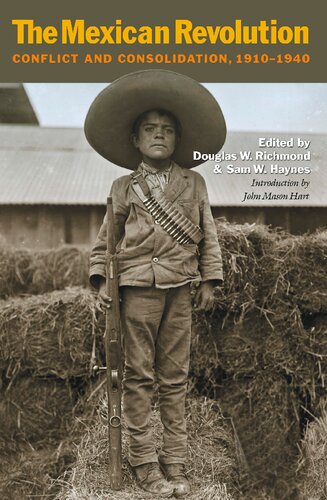

Most ebook files are in PDF format, so you can easily read them using various software such as Foxit Reader or directly on the Google Chrome browser.
Some ebook files are released by publishers in other formats such as .awz, .mobi, .epub, .fb2, etc. You may need to install specific software to read these formats on mobile/PC, such as Calibre.
Please read the tutorial at this link: https://ebookbell.com/faq
We offer FREE conversion to the popular formats you request; however, this may take some time. Therefore, right after payment, please email us, and we will try to provide the service as quickly as possible.
For some exceptional file formats or broken links (if any), please refrain from opening any disputes. Instead, email us first, and we will try to assist within a maximum of 6 hours.
EbookBell Team

4.4
52 reviewsIn 1910 insurgent leaders crushed the Porfirian dictatorship, but in the years that followed fought among themselves, until a nationalist consensus produced the 1917 Constitution. This in turn provided the basis for a reform agenda that transformed Mexico in the modern era. The civil war and the reforms that followed receive new and insightful attention in this book.
These essays, the result of the 45th annual Walter Prescott Webb Memorial Lectures, presented by the University of Texas at Arlington in March 2010, commemorate the centennial of the outbreak of the revolution.
A potent mix of factors—including the concentration of wealth in the hands of a few thousand hacienda owners, rancheros, and foreign capitalists; the ideological conflict between the Diaz government and the dissident regional reformers; and the grinding poverty afflicting the majority of the nation’s eleven million industrial and rural laborers—provided the volatile fuel that produced the first major political and social revolution of the twentieth century. The conflagration soon swept across the Rio Grande; indeed, The Mexican Revolution shows clearly that the struggle in Mexico had tremendous implications for the American Southwest. During the years of revolution, hundreds of thousands of Mexican citizens crossed the border into the United States. As a result, the region experienced waves of ethnically motivated violence, economic tensions, and the mass expulsions of Mexicans and US citizens of Mexican descent.